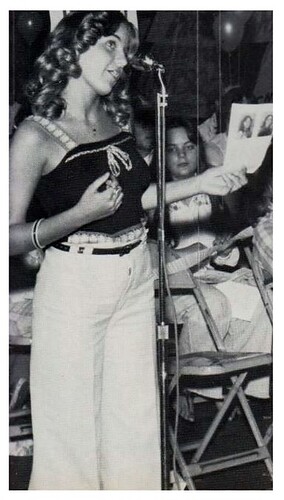The world of music recently paused to mourn the passing of a lyrical titan, Mark James, whose profound influence on American popular song resonated across generations and genres. James, the prolific songwriter behind iconic hits such as Elvis Presley’s “Suspicious Minds,” Willie Nelson’s “Always on My Mind,” and the infectious “Hooked on a Feeling,” died on June 8, 2024, at his home in Nashville, Tennessee, at the age of 83. His compositions, steeped in relatable human emotion and crafted with a keen ear for melody, became indelible parts of the cultural fabric, earning him a place among the most esteemed songsmiths of the 20th century.
Born Francis Rodney Zambon in Houston, Texas, James embarked on a musical journey that would span seven decades, yielding more than 300 songs. From the intimate struggles of personal relationships to the universal pangs of love and longing, his lyrics possessed a unique ability to “get to the point,” as his friend B.J. Thomas once noted, making them “relatable” and “familiar” to millions. This narrative power, coupled with his innate melodic gifts, allowed his work to transcend its initial recordings, finding new life and meaning through countless covers by a diverse array of artists.
This in-depth exploration will delve into the remarkable life and extraordinary career of Mark James, examining the pivotal moments and personal inspirations that shaped his artistic output. We will trace his path from a Houston youth with a violin to a celebrated figure in the Songwriters Hall of Fame, dissecting the stories behind his most enduring compositions and illuminating the lasting legacy he leaves on the landscape of popular music. His family’s statement eloquently captured his essence, noting that “Mark’s legacy and zest for life will live on in the hearts of those who loved him, and through his timeless lyrics and melodies that have been the soundtrack of lovers for generations.”
1. **Early Life, Musical Beginnings, and Name Change**Born Francis Rodney Zambon on November 29, 1940, in Houston, Texas, Mark James’s foundational years were steeped in a home environment that, while not overtly musical, offered subtle inspirations. His father, an Italian-born building contractor, enjoyed playing the mandolin and songs from his native Italy, while his mother worked as an elementary school teacher. Young Francis initially gravitated towards classical instruments, studying the violin and the accordion, and even conducting his school orchestra, experiences that subtly honed his understanding of musical structure and harmony.
However, it was not until he picked up a guitar that James truly discovered his profound love for music, a revelation he would later articulate himself. This shift from classical to more contemporary instrumentation marked a significant turning point, sparking his ambition to create rather than merely interpret. He began writing his own songs and performing in local clubs around Houston, cultivating his craft in the vibrant regional music scene of the late 1950s.
During this nascent period, a pivotal decision was made regarding his public identity. Club owners in Houston conveyed that his birth name, ‘Francis Zambon,’ was considered “a non-starter” for a budding performer. Consequently, he adopted the professional moniker Mark James, a name that would soon become synonymous with some of the most enduring songs of the era. His first single, “Jive Note,” was recorded in 1959, and by 1963, he had formed the Mark James Trio, releasing regional hits such as “Running Back” and “Tell Me,” which garnered some commercial success in the Houston area.
Read more about: Queen’s Royal Ascent: A Deep Dive into the Legendary Band’s Formative Years and Iconic Breakthroughs
2. **Military Service and the Road to Memphis**Just as his musical career began to gain momentum, Mark James’s trajectory was abruptly interrupted by a call to national service. In 1964, he was drafted into the US Army to serve in the Vietnam War, an experience that temporarily put his artistic aspirations on hold. This period of military service, during which he was deployed with the First Infantry Division, represented a significant hiatus from the burgeoning music scene, forcing a pause in his creative output and performance schedule.
Upon his discharge from the army, James returned to civilian life with a renewed sense of purpose and a clear direction for his career. Recognizing the need for a more established base for songwriting, he made the crucial decision to relocate to Memphis in 1968. This move proved to be a transformative step, as Memphis was a hotbed of musical innovation, home to influential studios and producers who were shaping the sound of soul, rock, and country music.
In Memphis, James secured a position as a staff songwriter for producer Chips Moman’s publishing company, a pivotal alliance that would define the early successes of his professional songwriting career. Moman, a renowned impresario of soul and country music, recognized James’s talent, providing him with the platform and connections necessary to bring his compositions to a wider audience. It was within this fertile creative environment that James would soon begin to pen the songs that would etch his name into music history.
Read more about: Unraveling the Roots of a Legend: Elvis Presley’s Journey Before His Family Began
3. **The Genesis of “Suspicious Minds”**Among the earliest and most enduring fruits of Mark James’s Memphis period was the legendary song “Suspicious Minds,” a composition deeply rooted in his own complex personal life. Late one night in 1968, while experimenting with melodies on his Fender guitar and using his Hammond organ pedals for a bass line, James found himself channeling profound emotional turmoil into his music. The lyrical inspiration stemmed from a particularly “confusing time” in his life, as he later recounted to the Wall Street Journal.
James was married to his first wife, Shirley Yates, at the time, yet he harbored lingering feelings for his childhood sweetheart, Karen Taylor, who was also married back in Houston. This emotional entanglement formed the core narrative of the song, capturing the dilemma of a relationship caught in an inescapable paradox. He famously described the situation, stating, “I felt as though all three of us were all caught in this trap that we couldn’t walk out of,” a sentiment that directly translated into the song’s iconic opening lines: “We’re caught in a trap / I can’t walk out / Because I love you too much, baby.”
James initially recorded his own version of “Suspicious Minds” in 1968, releasing it on Scepter Records, with Chips Moman producing. Despite the label’s confidence in its potential, the single regrettably failed to chart, receiving little attention upon its release. This initial lack of commercial success for his own rendition, however, belied the immense power and timeless appeal that the song would soon unleash in the hands of another legendary performer.
4. **”Suspicious Minds”: Elvis Presley’s Final Number One**The trajectory of “Suspicious Minds” dramatically changed course a year after its initial, unnoticed release. In 1969, Elvis Presley, then seeking fresh material to reinvigorate his career, was scheduled for recording sessions at the very studio where Mark James worked. Producer Chips Moman, convinced of the song’s hit potential, played “Suspicious Minds” for Presley, who, according to Moman, went “crazy about it.” The King’s reaction was immediate and enthusiastic; he wanted to hear the song “over and over again” and “learned it on the spot.”
Presley’s recording of “Suspicious Minds” employed an arrangement almost identical to James’s original version, with the primary difference being the unmistakable power and vocal delivery of Elvis himself. Released in 1969, the song swiftly soared to the top of the charts, becoming a number one hit and a monumental success. It was not merely a hit single; it represented a significant career rejuvenation for Presley, who, as James observed, “had been out of the market a while” and faced questions about the longevity of a rock artist.
This powerful collaboration secured “Suspicious Minds” its place in history as Elvis Presley’s 18th and final number one single, solidifying its status as one of his signature songs, performed frequently in concerts for years to come. The song’s enduring cultural significance was further recognized when Rolling Stone magazine listed it among its “500 Greatest Songs of All Time” at number 91, and it was later inducted into the Grammy Hall of Fame in 1999. Beyond Presley’s iconic rendition, the song continued to demonstrate its versatility, becoming a country hit as a 1976 duet by Waylon Jennings and Jessi Colter, and a British pop hit for the Fine Young Cannibals in 1986, proving “a great song,” as James often stated, “generally can go anywhere.”
5. **The Story Behind “Hooked on a Feeling”**Concurrently with the genesis of “Suspicious Minds,” Mark James was also crafting other compositions that would leave an indelible mark on popular music. One such song was “Hooked on a Feeling,” which he penned for his friend and fellow Houston native, B.J. Thomas. This track, like “Suspicious Minds,” found its roots in James’s personal affections, specifically inspired by Karen Taylor, his high school sweetheart whom he would later marry in 1971 and who was also the muse behind “Suspicious Minds.”
B.J. Thomas’s version of “Hooked on a Feeling,” produced by Chips Moman, was released in 1969 and quickly achieved widespread commercial success. It ascended to number five on the Billboard Hot 100 in January of that year, establishing itself as James’s first top ten hit as a songwriter. The recording was notably distinguished by its unique arrangement, featuring a distinctive sitar part performed by guitarist Reggie Young, which added an exotic and memorable textural layer to the pop melody.
Thomas’s rendition showcased James’s ability to craft infectious, upbeat pop anthems, a stark contrast to the more somber, introspective mood of “Suspicious Minds.” This early success underscored his versatility as a songwriter, capable of evoking a wide spectrum of emotions and genres. The song’s catchy melody and irresistible rhythm ensured its initial popularity, laying the groundwork for an even more extensive and eclectic life in the decades that followed.
6. **The Global Phenomenon of “Hooked on a Feeling” Covers**The enduring appeal of “Hooked on a Feeling” became evident through its remarkable journey of reinvention, transforming into a global phenomenon through various cover versions. In 1971, singer Jonathan King introduced a chanting “ooga-chaka” opening to his cover, an addition that would become synonymous with the song’s most successful iteration. It was the Swedish group Blue Swede who, in 1974, adopted this distinctive prelude for their pop version, taking “Hooked on a Feeling” all the way to number one on the Billboard Hot 100.
Blue Swede’s energetic rendition, spearheaded by singer Björn Skifs, propelled the song into a new stratosphere of popular culture. The “ooga-chaka” intro, initially a whimsical addition, became an iconic earworm, instantly recognizable to millions. B.J. Thomas, the original hitmaker, held no ill will towards the cover’s massive success, stating in what may have been his final interview, “You know what? You have to admit it’s a great production. They really put it together great and it deserved to be a #1 record. And they made my buddy, Mark James, the guy that wrote it, a lot of money. I never really had any hard feelings about that.”
The song’s widespread recognition was further cemented by its prominent inclusion in several major motion pictures and television series, demonstrating its timeless appeal and cinematic quality. Quentin Tarantino famously utilized the Blue Swede version in the soundtrack to his 1992 crime thriller “Reservoir Dogs,” introducing it to a new generation of film enthusiasts. Decades later, it found another massive audience when featured in Marvel’s 2014 superhero saga “Guardians of the Galaxy,” cementing its status as a beloved pop culture touchstone. Most recently, Björn Skifs himself performed it at the opening of the 2024 Eurovision Song Contest in Malmo, a testament to its enduring international appeal and the universal joy it continues to evoke.
7. **”Always on My Mind”: Its Genesis and Early Recordings**Beyond the raw emotional power of “Suspicious Minds” and the infectious appeal of “Hooked on a Feeling,” Mark James cemented his legacy with another profoundly resonant composition: “Always on My Mind.” This poignant ballad, co-written with Johnny Christopher and Wayne Carson in 1971, emerged as a testament to unspoken devotion and enduring regret, themes that would ensure its universal appeal across diverse musical landscapes.
Its journey to widespread recognition began in 1972, with multiple artists lending their voices to its sorrowful narrative. Brenda Lee was among the first to record the song, releasing a rendition that achieved modest success as a minor country hit. Shortly thereafter, Gwen McCrae also contributed her interpretation, further establishing the song’s presence within the contemporary music scene.
That same year, Elvis Presley, whose career had been revitalized by James’s compositions, recorded his own version of “Always on My Mind.” Initially, Presley’s rendition was issued as the B-side to his single “Separate Ways,” a common practice for showcasing additional material. However, its profound emotional depth and Presley’s impassioned delivery quickly resonated with audiences.
In the United Kingdom, the song’s inherent power was immediately recognized, prompting its promotion to A-side status. This strategic decision proved astute, as Presley’s “Always on My Mind” swiftly ascended the British charts, reaching an impressive number nine and signaling its potent connection with listeners beyond American shores. This early embrace laid crucial groundwork for the song’s eventual transformation into a global phenomenon.

8. **”Always on My Mind”: Willie Nelson’s Iconic Rendition and Grammy Success**A decade following its initial recordings, “Always on My Mind” underwent a dramatic revitalization that would forever etch it into the annals of American music history. In 1982, country music icon Willie Nelson released his version of the ballad, a rendition that many now consider definitive and which introduced the song to an entirely new generation of listeners.
Nelson’s gravelly, understated delivery imbued the lyrics with a raw honesty and weary wisdom that perfectly captured the song’s themes of missed opportunities and steadfast love. His interpretation quickly resonated with both country and mainstream audiences, skyrocketing to the top of the U.S. country charts and demonstrating the song’s extraordinary crossover appeal. It also achieved significant success on the Billboard Hot 100, peaking at an impressive number five.
This widespread popularity garnered Mark James, Johnny Christopher, and Wayne Carson significant industry accolades. At the 1983 Grammy Awards, “Always on My Mind” earned two prestigious honors: the Grammy Award for Song of the Year, recognizing its overall artistic excellence and cultural impact, and the Grammy Award for Best Country Song, affirming its profound resonance within the country genre.
The immense success of Willie Nelson’s rendition was so profound that, for many, his interpretation became synonymous with the song itself. It underscored James’s innate ability to craft compositions that, while deeply personal in origin, possessed a universal emotional core capable of being profoundly reimagined by diverse artists, each adding a new layer to its timeless narrative.
9. **”Always on My Mind”: Global Reinventions and Pop Culture Impact**The enduring power of “Always on My Mind” is perhaps best illustrated by its remarkable journey through countless reinterpretations, solidifying its place as one of the most covered songs in modern music. With more than 300 acts having recorded their own versions, the song continuously finds new life and fresh audiences, demonstrating its truly timeless appeal.
One of the most notable and culturally impactful reinventions came in 1987, when the British electro-pop duo Pet Shop Boys released their distinctive rendition. Transforming the wistful ballad into a pulsing, “hi-NRG disco stomper,” as one commentator described it, they injected a vibrant, electronic energy that captivated a new demographic and showcased the song’s incredible versatility across genres.
This bold reimagining was a massive commercial success, particularly in the United Kingdom, where it became a Christmas number one single, a highly coveted chart position. Its global reach was also significant, achieving a number four ranking on the U.S. singles chart in 1987. The Pet Shop Boys’ version was later lauded in a poll conducted by the BBC, which named it the best cover of all time, a testament to its innovative artistry and widespread adoration.
Further cementing its cultural significance, “Always on My Mind” was inducted into the Grammy Hall of Fame in 2008, an honor reserved for recordings of lasting qualitative or historical significance. This recognition underscores the song’s profound impact, not just through its original compositions but through the numerous artists who have, over the decades, ensured its continued presence as a beloved staple in the global musical lexicon.
10. **Other Notable Compositions and Continued Success in the 1970s**While “Suspicious Minds,” “Hooked on a Feeling,” and “Always on My Mind” remain Mark James’s most celebrated works, his prolific output in the 1970s demonstrated a consistent ability to craft hit songs across various genres. His commitment to songwriting yielded a diverse catalog that found success with numerous other prominent artists, further solidifying his reputation as a versatile and in-demand composer.
In 1973, American country singer Brenda Lee scored another top ten single with James’s song “Sunday Sunrise.” The track’s melodic charm and relatable lyrics resonated widely, and its enduring appeal was later underscored when Canadian musician Anne Murray covered it in 1975, bringing it to an even broader audience. This period showcased James’s adeptness at crafting material that transcended individual performers and found success in different interpretative styles.
Elvis Presley, a frequent collaborator, continued to record James’s compositions throughout the decade. Among these were “Raised on Rock,” a track that demonstrated a grittier edge, and “It’s Only Love,” a ballad that again showcased James’s mastery of heartfelt emotion. Most notably, Presley also recorded “Moody Blue,” which became the title track to his last studio album, released shortly before his death in 1977, marking a poignant final chapter in their creative partnership.
James’s songwriting reach extended beyond the realms of country and rock. In 1973, the jazz-rock fusion group Blood, Sweat & Tears released his song “Roller Coaster” as a single from their album *No Sweat*. That same year, pop idol David Cassidy included “Roller Coaster” on The Partridge Family’s final album, *Bulletin Board*, alongside two other James compositions: “Where Do We Go From Here” and “Alone Too Long,” the latter co-written with Cynthia Weil. This period showcased his ability to adapt his songwriting to varied musical textures and commercial demands.
Read more about: John Lodge’s Enduring Journey: Bassist, Songwriter, and Soul of The Moody Blues Remembered at 82
11. **Later Career: Film Scoring and Esteemed Accolades**As his career progressed, Mark James’s musical interests expanded beyond traditional songwriting, leading him to explore the captivating world of film scores. This shift reflected a desire to engage with music in a different narrative capacity, utilizing his melodic and compositional talents to enhance cinematic storytelling. He pursued formal training in this discipline, undertaking studies at both the University of California, Los Angeles (UCLA) and the prestigious American Film Institute.
His foray into film scoring saw him contribute to various projects, demonstrating a new dimension to his artistic capabilities. Notably, James composed the score for the 2001 short film *Trade Day*, credited under his birth name, Francis Zambon. This venture into cinematic composition allowed him to weave his musical sensibilities into a visual medium, creating atmospheric and emotionally resonant backdrops for on-screen narratives.
Beyond direct scoring, James’s enduring compositions found a vibrant second life on the silver screen. His songs became integral parts of soundtracks for major motion pictures, introducing his work to new generations of film enthusiasts. The Blue Swede version of “Hooked on a Feeling,” for instance, achieved iconic status through its inclusion in Quentin Tarantino’s 1992 crime thriller *Reservoir Dogs* and later garnered massive recognition in Marvel’s 2014 superhero saga *Guardians of the Galaxy*. Other films featuring his music included *Honeymoon in Vegas*, *Practical Magic*, *Kramer Vs. Kramer*, and *Frequency*.
Throughout his illustrious career, Mark James received numerous prestigious accolades recognizing his immense contributions to American music. In 2014, he was formally inducted into the Songwriters Hall of Fame, a paramount honor acknowledging his indelible impact on popular song. This was followed by inductions into the Texas Songwriters Hall of Fame, the New York Songwriters Hall of Fame, and the Nashville Songwriters Hall of Fame in 2015, solidifying his status across various influential musical communities.
Further testament to his enduring influence came in 2000, when BMI, a performing rights organization, named him one of the top songwriters of the 20th century. He was placed in the esteemed company of musical titans such as Paul McCartney, Elton John, and the Motown songwriting trio of Holland-Dozier-Holland, a clear indication of the profound and widespread impact of his melodic and lyrical genius.
Read more about: Beyond the Limelight: Exploring the Intellectual Journeys of Public Figures in Philosophy and Particle Physics
12. **Enduring Legacy and Impact**Mark James, born Francis Rodney Zambon, dedicated seven decades of his life to the art of songwriting, crafting more than 300 songs that have transcended genres and generations. His death on June 8, 2024, at the age of 83, brought a collective moment of reflection on a career defined by an extraordinary ability to capture universal human emotions with clarity and precision.
His compositions, whether charting the complexities of love and longing in “Suspicious Minds” or evoking nostalgic devotion in “Always on My Mind,” possessed a unique relatability. As his friend B.J. Thomas eloquently noted, James had a gift for “telling stories in a concise way. They get to the point. They’re relatable. They’re familiar.” This narrative power ensured his songs remained relevant, resonating with listeners across evolving musical landscapes.
James himself often expressed gratitude for the continued life of his work, stating he was “thankful” that his songs were “still being embraced by new generations of listeners around the world.” This sentiment underscores the timeless quality of his melodies and lyrics, which have consistently found new interpretations and cultural contexts, from disco anthems to cinematic scores.
The profound impact of his artistry was perhaps best encapsulated by his family’s statement following his passing: “Mark’s legacy and zest for life will live on in the hearts of those who loved him, and through his timeless lyrics and melodies that have been the soundtrack of lovers for generations.” His work, indeed, formed a significant part of the emotional tapestry of countless lives, a testament to his innate ability to connect deeply through song.
Read more about: Secret Tragedies: 12 Beloved DC Movie and TV Actors Whose Quiet Departures Left Lasting Legacies
In retrospective moments, James occasionally pondered what his career might have been had he continued as a performer. Yet, he often added a crucial caveat, reflecting on the intense pressures that accompany public stardom. “It’s a good thing that I can just walk down the street,” he once said, acknowledging the heavy toll success can take, adding, “It ate Elvis up. So I count myself lucky.” His understanding that “a great song generally can go anywhere” affirmed his true calling: not necessarily to be the voice, but to be the timeless architect of the songs themselves, ensuring his profound influence would ripple across the decades, forever etched into the heart of popular music.
















